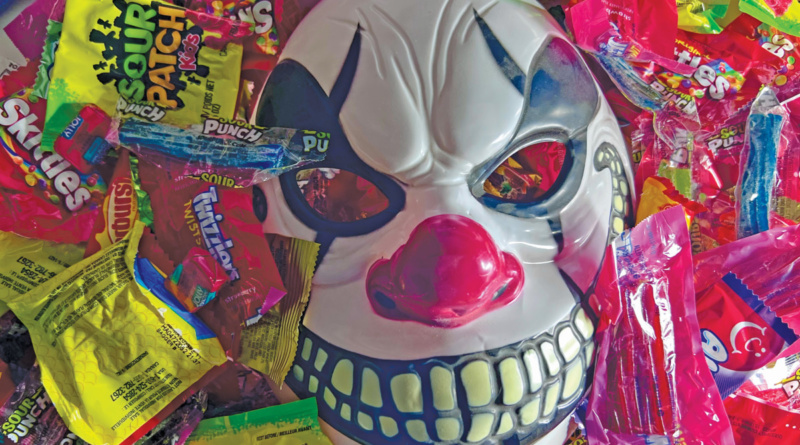Busting the myth of drugged Halloween candy
PHOTO: “We’ve stopped believing in ghosts and goblins for the most part, (instead) we’ve just created a special criminal for Halloween,” sociology and criminal justice professor Joel Best said.
By Xochitl Armién & Holt Klineberg
BlueDevilHUB.com Staff–
Myths of sadists harming children on Halloween night have been around since the beginnings of the holiday. Every October, stories of killer clowns, kidnapped children and poisoned candy laced with drugs and razor blades reemerge.
“Halloween is supposed to be scary, and we’ve stopped believing in ghosts and goblins for the most part. We’ve just created a special criminal for Halloween to make it scary,” said Joel Best, a professor of sociology and criminal justice at the University of Delaware.
The first report of candy tampering comes from California dentist William Shyne. In 1959, Shyne poisoned 500 pieces of candy with laxatives.
Reportedly 30 children fell ill; however there were no casualties. Eventually the crime was traced back to Shyne and he was charged with public indecency and unlawful dispensing of drugs.
UC Davis sociology professor Thomas Beamish says that the myths of Halloween candy tampering stand in as proxies for real fears in our society.
“Stories build on fears we have, and one fear prominent in the 60s and 70s is fears parents have for their children’s well being,” Beamish said.
Contemporary legends of Halloween sadists targeting children began to gain momentum in the late 1950s and 60s.
According to Beamish, these contemporary legends stem from the very real fears parents had during those decades. These fears include the fear of contamination in water and food and fears of criminal attacks, terrorism, child abuse and pedophilia.
During the war on drugs in the 1980s, fears of narcotics took the forefront and stories of laced Halloween candy rose in popularity.
Most recently there has been fear of candy laced with fentanyl, a highly addictive synthetic opioid that has been responsible for 107,375 deaths as of December 2021.
Sophomore Charm Blackwell recalls her mother being worried one year after seeing a news report on television about candy that had been tampered with.
”There was this candy that had a whole bunch of nails inside of it and (a man) was just giving it out to little kids,” Blackwell said.
Despite the popularity of this contemporary legend, Best, who has gained notoriety for his award winning books and research on the topic, claims that there has been next to no evidence of any real cases of strangers harming random children with sweets on Halloween night.
“I haven’t been able to find any data that any child has ever been killed or seriously hurt by a contaminated treat that was sourced by trick or treating,’’ Best said.
Not only is there little evidence of people tampering with Halloween candy, but according to Davis Police Lieutenant James McNiven there is little reason for someone to do so.
“Drugs cost money and narcotics dealers stand for profit… there’s nothing to gain bygiving drugs away to kids for free,”McNiven said.
However, McNiven still encourages parents and children to always do their due diligence by checking if wrappers are partially opened or look wrong.
“There’s no greater risk of candy being tampered with than there was in any years past. That being said, you should always inspect your candy,” McNiven said.


